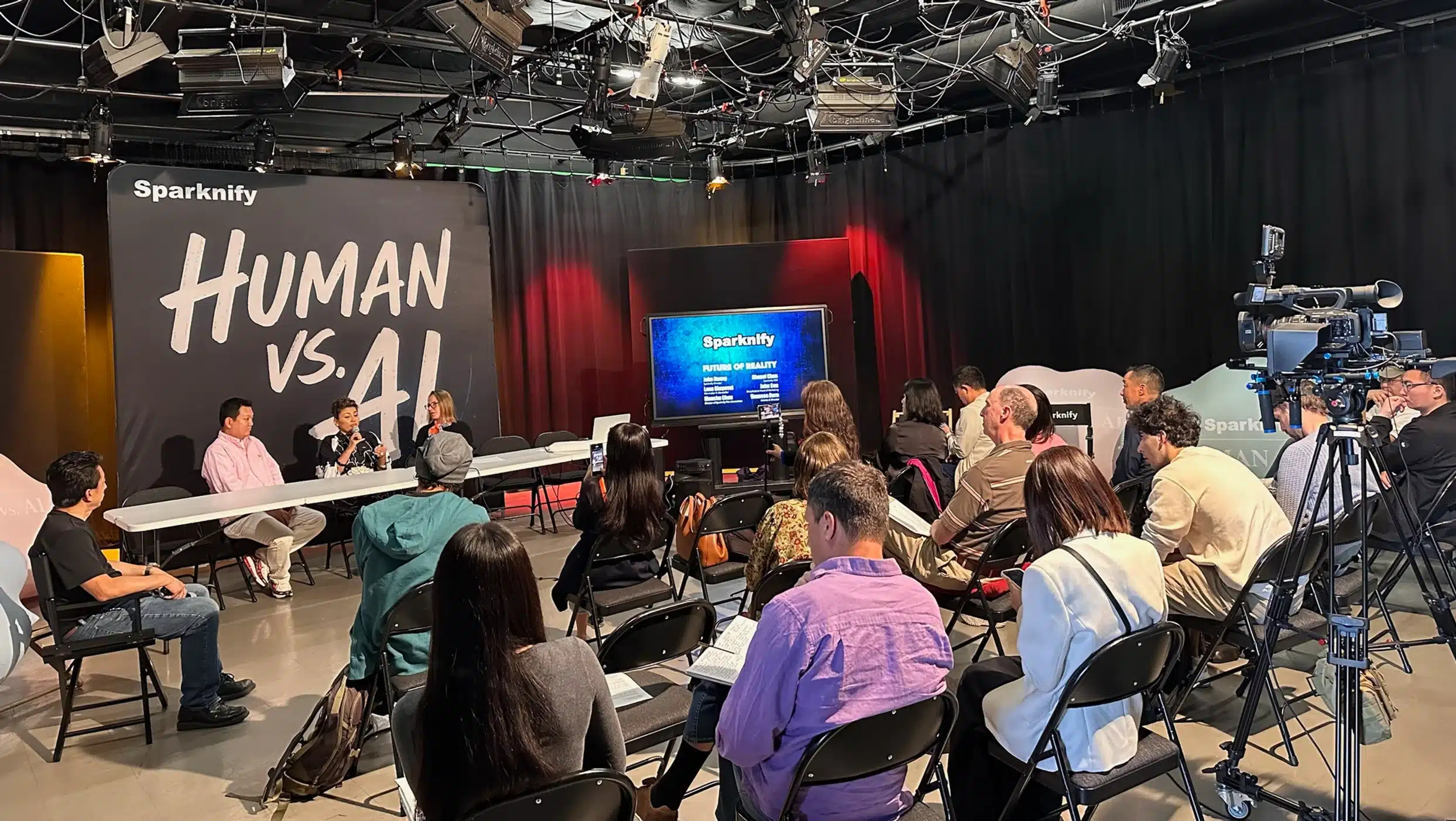I remember when creating a simple corporate video meant booking a studio, hiring a camera crew, and spending days in post-production. Last month, I needed to create 10 product videos for a client and turned to an AI video tool instead of my usual production team. The result? We completed all videos in just 2 days and saved nearly $8,000 compared to our traditional workflow. This stark contrast got me thinking about the true cost difference between AI-powered video creation and conventional methods.
The numbers tell a fascinating story. While traditional video production costs between $1,000-$10,000 per finished minute, AI solutions can bring that down to as little as $2.13 per minute with Synthesia, or even just $0.50 with vidBoard. However, the latest market developments have introduced even more options, with Google’s Veo 2 priced at $30 per minute and OpenAI’s Sora available through ChatGPT Pro at $200 per month. But the question remains: is the quality comparable, and when should businesses choose one approach over the other?
Let’s break down the economics of both approaches to help you make informed decisions for your next video project.
The Economics of AI Video Generation
AI video tools have transformed how businesses approach content creation through affordable subscription models and streamlined workflows. Recent studies show AI video production saves 70-90% compared to traditional methods, making professional-quality content accessible to companies of all sizes.
2025 Pricing Updates: What’s Changed
The AI video generation landscape has evolved significantly with new pricing models and market entries that reshape cost considerations:
Google’s Veo 2 launched in September 2024 with revolutionary pricing at $0.50 per second, translating to $30 per minute or $1,800 per hour. This premium option targets high-end AI video production with cinematic quality.
OpenAI’s Sora has entered the market through ChatGPT Pro subscriptions at $200 monthly, offering businesses predictable costs rather than per-credit pricing models.
Adobe Firefly Video updated their pricing to $9.99 monthly for 20 clips and $29.99 monthly for 70 clips, making it more accessible for regular content creators.
Subscription-Based Pricing Models
Most AI video platforms operate on tiered subscription models that make high-quality video production accessible to companies of all sizes:
vidBoard offers lifetime deals where you pay once and keep using the tool forever. Plans start at $99 letting you create videos for just 50 cents each.
Synthesia offers plans starting at $29 monthly for 10 minutes of video content, with their popular Creator Plan ($89 monthly) bringing the per-minute cost down to $2.13 when fully utilized.
Pictory provides a Standard Plan at $23 monthly supporting up to 30 videos, perfect for businesses needing regular social media content.
Runway ML updated their pricing with their Pro Plan at $15 monthly for 625 credits and $35 monthly for 2,250 credits, supporting approximately 35 seconds of HD video creation per credit.
The beauty of these subscription models is that they eliminate the traditional upfront costs of equipment, studio time, and specialized labor. This makes professional-looking video content accessible even to small businesses and startups with limited marketing budgets.
Primary Cost Drivers in AI Video Production
Several factors influence the overall expense of AI-generated videos:
| Cost Factor | AI Solution | Traditional Equivalent | Potential Savings |
|---|---|---|---|
| Media Libraries | Included in platforms | $100-$250 per clip licensing fees | Up to 100% |
| Localization | AI avatars with 120+ languages | Translation and voiceover services | 50% or more |
| Production Time | Minutes to hours | Days to weeks | 70-90% |
| Scalability | Minimal additional cost | Linear cost increase | Up to 80% for high-volume |
These factors combine to create significant cost advantages, especially for businesses that need to produce videos at scale or in multiple languages. Small businesses are saving 70-90% using AI video tools versus traditional production methods.
Traditional Video Production Cost Breakdown
Despite the rise of AI tools, traditional video production remains the gold standard for certain types of content. The global video production market reached $83.55 billion in 2024 and is projected to reach $865.37 billion by 2033, indicating continued strong demand.
Pre-Production and Filming Expenses
Traditional video workflows require substantial upfront investment and planning. Current industry standards show:
Corporate video production typically costs $100-$149 per hour as the industry standard
Professional corporate videos range from $1,000-$5,000 per minute for basic to standard quality production
High-end corporate productions can reach $15,000-$50,000+ for complex marketing campaigns
Interview-style videos with a freelance videographer range from $800-$1,200 per day
B2B video production ranges from $10,000-$25,000+ for high-quality corporate content
Even modest short films have a median cost of around $3,000 for a 15-minute production
These costs cover essentials like scriptwriting, location scouting, talent hiring, equipment rental, and the actual filming days. The more complex your vision, the higher these costs will climb.
Post-Production and Hidden Costs
Many businesses underestimate the expenses that come after filming wraps. Post-production now accounts for 50-60% of the total video budget, making it a critical consideration when planning video projects :
Video editing costs typically $75-$150 per hour for professional services
Complex editing involving motion graphics or visual effects ranges from $1,500-$5,000 per minute
Stock footage and music licensing can add $2,000-$5,000 for a one-minute video
Client revisions often extend timelines by 20-30%, increasing labor costs accordingly
These post-production expenses often represent the largest portion of video budgets, making them a critical consideration when planning video projects.
The Personalization Premium: Why Custom Content Costs Less with AI
One of the most compelling advantages of AI video generation lies in personalization capabilities. Recent studies show that 93% of companies using personalized video see increased conversion rates, while personalized videos achieve 300% higher response rates than traditional outreach.
Personalization ROI Statistics
The data on personalized video effectiveness is compelling:
Personalized email videos have 8x higher click-through rates than standard video content
72% of consumers prefer purchasing from brands offering personalized content
Video personalization can reduce acquisition costs by 50% according to McKinsey research
Personalized videos are 35-116% more effective than generic videos depending on the industry
AI Avatar Success Stories
Real-world implementations demonstrate the effectiveness of AI-powered personalized content:
RingWave Media saw a 110% increase in view rates with AI avatar ads compared to traditional video ads
VoiceDrop.ai reported a 45% increase in conversion rates using AI avatars for their marketing campaigns
AI avatars cost approximately 20-25% of traditionally produced videos while maintaining engagement levels
vidBoard enables 300% higher response rates with personalized video outreach compared to traditional methods
Head-to-Head Comparison: Where Each Approach Wins
Both AI and traditional video production have their place in a modern marketing strategy. Let’s compare them across several key dimensions with the latest 2024-2025 data:
Cost Efficiency Analysis
The cost gap between AI and traditional methods has become even more pronounced:
AI video generation costs now range from $0.50-$30 per minute depending on the platform and quality level
Traditional freelance production ranges from $1,000-$5,000 per minute
Agency production starts at $15,000 and can exceed $50,000 per minute for complex campaigns
This means AI tools can reduce costs by 97-99.9% for simple projects. A 10-video social media campaign might cost just $89 with Synthesia versus $100,000+ through a traditional agency.
Time Savings and Workflow Impact
The time difference has become increasingly dramatic:
AI tools reduce video production time by 80% (hours vs weeks)
AI platforms compress production timelines from weeks to hours
Clients can update multilingual training videos in hours rather than weeks
Traditional post-production alone typically requires 40-80 hours for a 5-minute corporate video
This speed advantage translates to more nimble marketing, allowing businesses to respond to trends and opportunities in near real-time.
Quality and Customization Trade-Offs
While AI excels in efficiency, traditional production maintains advantages in certain areas:
AI tools like HeyGen and vidBoard produce more consistent outputs but with less creative flexibility compared to human-directed cinematography
Traditional methods offer greater control over lighting, camera movement, and nuanced emotional performances
Human directors and editors bring creative vision that AI currently struggles to match
Complex storytelling, especially for brand-defining content, still benefits from the human touch
These quality differences are most apparent in narrative-driven content or projects requiring subtle emotional resonance.
Global Market Dynamics: Regional Cost Variations
The adoption of AI video tools varies significantly across global markets, creating regional cost advantages and considerations.
Market Leadership and Growth
Asia-Pacific leads the AI video generator market with 31.40% revenue share, indicating rapid adoption and cost-effective implementation in the region.
The AI video generator market is projected to reach $2.56 billion by 2032 with a compound annual growth rate of 20%.
Digital video ad revenue increased 19.2% between 2023-2024 to $62.1 billion, demonstrating continued investment in video content.
Multilingual Content ROI
The global nature of modern business makes multilingual capabilities increasingly valuable:
Companies investing in multilingual content marketing show 1.5x increase in revenue growth compared to single-language approaches
76% of consumers prefer purchasing from websites in their native language, making localization a critical factor
AI platforms excel in this area by offering instant translation and voiceover capabilities at minimal additional cost, while traditional production requires separate shoots or expensive dubbing services.
Real-World Applications: When to Choose Each Approach
Based on the latest market data and performance statistics, here’s when each production method makes the most sense:
Ideal Uses for AI Video Generation
Training and Educational Content – Especially when updates are frequent and 89% of video marketers report good ROI from video content
Product Demonstrations – For showcasing features and capabilities with consistent messaging
Multilingual Content – When you need the same message in several languages cost-effectively
Social Media Videos – Particularly when volume and timeliness matter, as 82% of internet traffic will be video content by 2024
Personalized Messaging – When scaling individualized content for sales outreach
Corporate Communications – For internal updates and announcements where speed trumps artistic direction
When Traditional Production Remains Valuable
Brand Anthem Videos – That define your company’s identity and values with emotional resonance
High-End Commercials – For major campaigns and product launches requiring cinematic quality
Documentary-Style Content – Capturing authentic human experiences and testimonials
Complex Visual Narratives – Requiring artistic cinematography and creative direction
Celebrity or Influencer Features – Where personality and charisma are central to the message
Crisis Communications – When authentic human presence and empathy are crucial
The Hybrid Model: Combining AI and Traditional Production
A hybrid approach combining AI and traditional methods is becoming the standard for optimal cost-quality balance. This strategic approach allows businesses to maximize impact while minimizing overall costs.
Strategic Implementation
Use AI for Rapid Prototyping: Create initial versions quickly and cost-effectively, then invest in traditional production for final versions of high-impact content
Scale with AI, Polish with Humans: Produce high-volume content with AI tools, then enhance key pieces with traditional post-production
Multilingual Distribution: Create master content traditionally, then use AI for cost-effective localization
Content Lifecycle Management: Use AI for regular updates and iterations of successful traditional content
Budget Allocation Strategy
Enterprise video production budgets are increasing with 83% of companies boosting content spend, making strategic allocation more critical :
Reserve 60-70% of budget for flagship traditional content
Allocate 20-30% for AI-powered regular content and updates
Keep 10% flexible for rapid response and testing with AI tools
This balanced approach ensures maximum ROI while maintaining brand quality standards.
Case Study: vidBoard & Sparknify
A perfect example of AI’s cost efficiency and versatility comes from vidBoard’s collaboration with Sparknify, a Silicon Valley Awards Show.
Here’s how vidBoard transformed their event production:
Created custom AI avatars to serve as digital hosts, eliminating the need for on-site presenters and reducing coordination costs
Developed AI voice clones for seamless, natural-sounding presentations across multiple sessions
Enabled multilingual presentations without language barriers, expanding their global audience reach
This showcases how AI can transform live events by:
✓ Enabling consistent, high-quality hosting across all sessions without fatigue or scheduling conflicts
✓ Providing personalized content delivery to global audiences in their preferred languages
✓ Reducing production time and costs while maintaining professionalism and engagement
✓ Scaling presence without exhausting team resources or requiring extensive travel
Whether you’re hosting webinars, training sessions, or corporate events, vidBoard’s AI solutions help organizations deliver professional presentations with minimal production effort while achieving 300% higher response rates with personalized video outreach.
Creating a Cost-Effective Video Strategy
Consider these updated steps when developing your video production roadmap for 2025:
Audit Current Needs: Categorize video requirements as high-impact (brand-defining) or high-volume (regular content)
Strategic Budget Allocation: Reserve traditional production for flagship content that defines brand identity
AI Implementation: Utilize AI tools for regular content needs like product updates, training, and social media
Hybrid Approach: Consider using AI for rapid prototyping before investing in full traditional production
Global Expansion: Explore how AI can extend traditional content reach through cost-effective localization
Performance Monitoring: Track video content performance as it drives 49% faster revenue growth for companies using it effectively
This strategic division of labor allows you to maximize impact while minimizing overall costs in an increasingly competitive content landscape.
Future-Proofing Your Video Production
The landscape continues to evolve rapidly with significant implications for business planning:
Technology Advancement: Newer AI tools like Google’s Veo 2 and emerging models are narrowing the quality gap with traditional production
Cost Trajectory: The price difference will likely continue favoring AI solutions as technology improves and scales
Creative Value: Human creativity remains irreplaceable for emotionally resonant storytelling and complex narratives
Market Expansion: The global film and video production market is projected to grow from $297 billion in 2024 to $429.8 billion by 2034
Skill Development: Building capabilities in both traditional and AI-powered production provides maximum flexibility as technology and market expectations evolve
By developing expertise in both approaches, your business can adapt as the industry continues its rapid transformation.
Conclusion: Making the Right Choice for Your Business
The data is clear: AI video generation offers remarkable cost savings compared to traditional production methods. For high-volume content needs, routine updates, or multilingual requirements, AI tools can reduce costs by 70-90% while dramatically shortening production timelines.
However, traditional production maintains its value for brand-defining content where emotional resonance, artistic vision, and nuanced performances make a critical difference. The human touch remains essential for stories that need to forge deep connections with audiences.
The most effective approach for most businesses will be a hybrid model using AI for scale and efficiency while investing in traditional production for signature content. This balanced strategy maximizes budget efficiency while ensuring your most important messages receive the creative attention they deserve.
As you evaluate your next video project, start by asking not just “How much will this cost?” but “What approach will deliver the right balance of quality, efficiency, and impact for this specific need?” The answer will guide you to the production method that creates the most value for your business in 2025 and beyond.
FAQ Section
Q: How much can businesses realistically save by switching from traditional to AI video production?
A: Small businesses typically save 70-90% using AI video tools versus traditional production. For example, a 10-video social media campaign might cost $89 with AI tools versus $100,000+ through traditional agencies, representing savings of over 99% for simple projects.
Q: What’s the quality difference between AI-generated and traditionally produced videos in 2024?
A: While AI tools like Google’s Veo 2 are rapidly improving and can produce cinema-quality content, traditional production still excels in complex storytelling, nuanced emotional performances, and creative cinematography. AI avatars cost 20-25% of traditional videos while maintaining strong engagement levels.
Q: How effective is personalized video content compared to generic videos?
A: Personalized videos achieve 300% higher response rates than traditional outreach, with 93% of companies using personalized video seeing increased conversion rates. Additionally, personalized email videos have 8x higher click-through rates than standard video content.
Q: What’s the best approach for businesses just starting with video content?
A: Start with AI tools for regular content creation and testing, then invest in traditional production for key brand-defining pieces. 89% of video marketers report good ROI from video content, making it a worthwhile investment. vidBoard offers lifetime deals starting at $99 for businesses wanting to test AI video creation cost-effectively.
Q: How is multilingual video content performing in terms of ROI?
A: Companies investing in multilingual content marketing show 1.5x increase in revenue growth, as 76% of consumers prefer purchasing from websites in their native language. AI tools excel at cost-effective localization compared to traditional dubbing services.
























